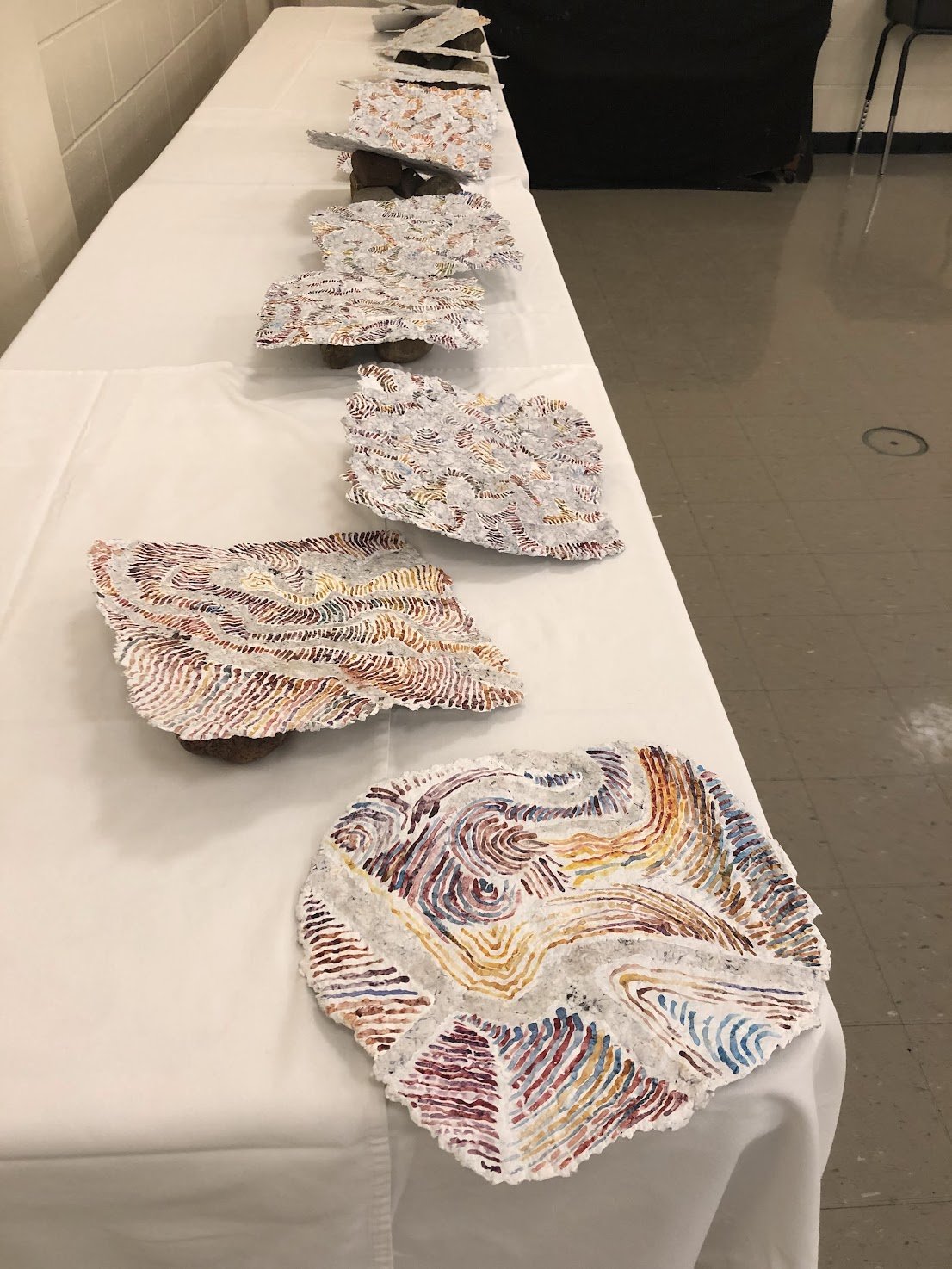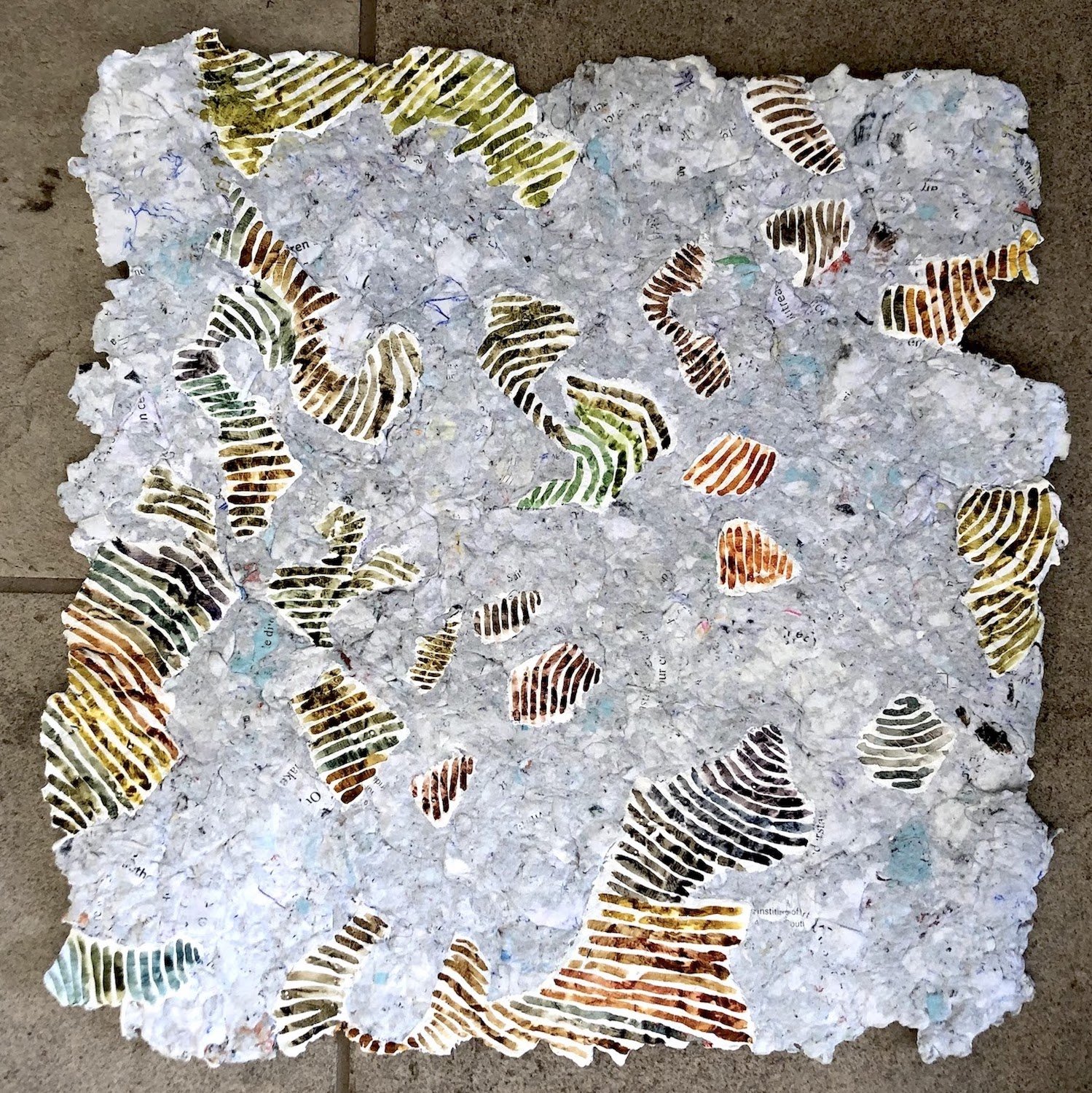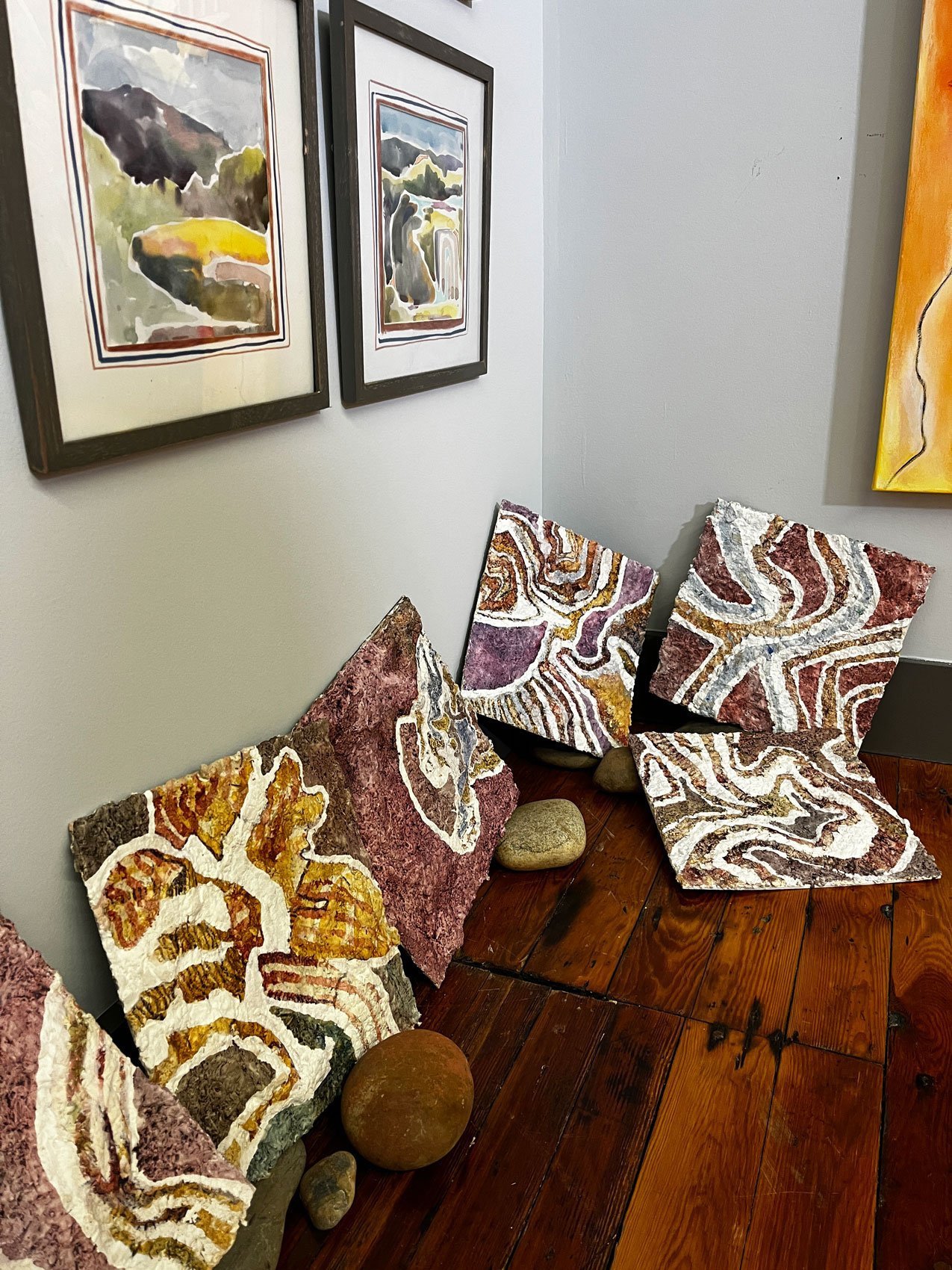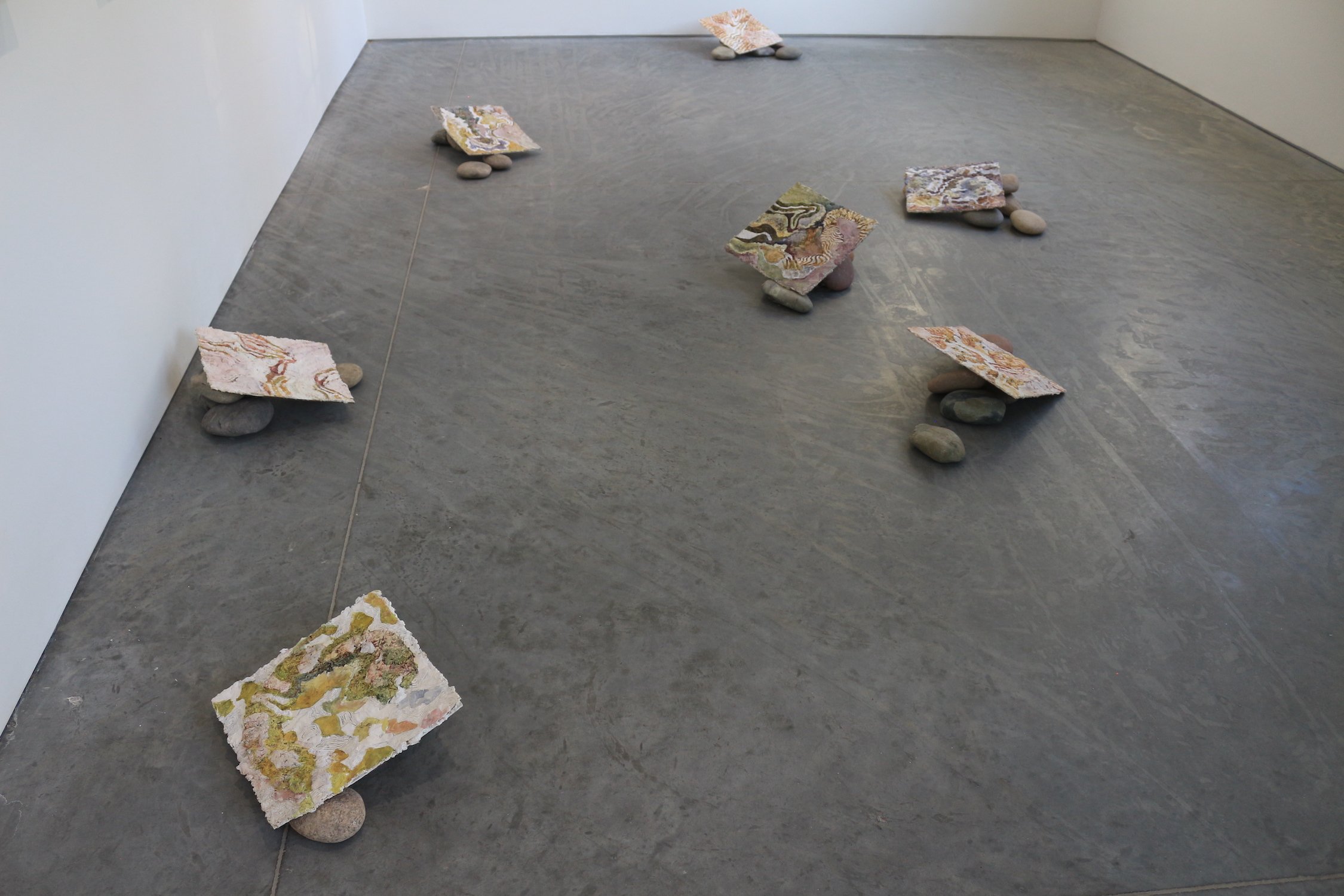Stepping Stones
By Casey Murano
Artist Statement
These stepping stones teach me how to find beauty in the challenging process of transformation, especially those seasons of displacement where I am learning to hold emerging contradictions. I started making these pulpy paper panels to sort through tensions I was experiencing around themes of pilgrimage. On one hand, pilgrimage invites me to engage deeply with the reality of the places I inhabit--both with the joys and challenges, strengths and opportunities for growth that come from being in community. On the other hand, calling myself a pilgrim also carries a connotation that raises a troubling legacy of colonialism, especially when I think about the Catholic Church’s Doctrine of Discovery that enabled the exploitation of Indigenous people who were already living in right relationship with the land. Working through these tensions is a pilgrimage in itself, one that follows the paschal movement of death into new life. I tear Ash Wednesday worship aids (as well as bulletins, flyers, notecards, sketches, and journal pages I’ve accumulated) into pieces, soak them with water, and mush them into new topographies. The paper scraps change form and usher me into a new way of being. As the soggy mixture rests in the sunshine to dry, I marvel at the patterns that peek out from the textured topography and respond to these textures by tracing them wTith thin brush streams of watercolor. As the stepping stones balance precariously, yet patiently on rocks they remind me that pilgrimage is a synodal process: one that is beautiful not because of its certainty or majestic finale, but one that encourages us to continue responding to the Spirit who calls us into new life.
About the Artist:
Casey Murano grew up surrounded by the Blue Ridge Mountains in Roanoke, Virginia and is now living on one of those hilltops–just over the West Virginia border at Bethlehem Farm, an intentional Catholic community in Appalachia. Grounded in Bethlehem Farm’s various ministries (such as low-income home repair, gardening, and service retreats) and cornerstones (prayer, simplicity, service, and community), Casey’s art practice reflects the cyclical processes of life in this place and context. She creates works on paper: contemplative maps that explore themes of pilgrimage, placemaking, and displacement. Before Bethlehem Farm, Casey studied art at the University of Richmond and participated in the St. Joseph Worker Program in St. Paul, Minnesota.





